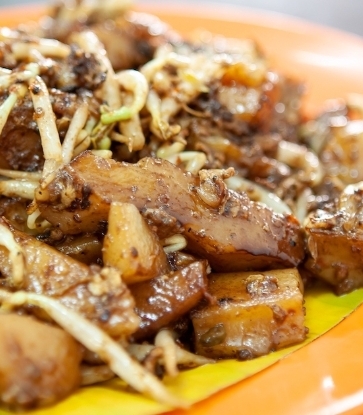Modern-day Malaysia is a young nation that only came into existence in 1957. Post-World War II, its former British colonizers began relinquishing control over all their dominions in the region, forming the Federation of Malaysia in 1963. This new federation comprised an eclectic mix of territories, including British-built port cities, centuries-old Malay sultanates, and Bornean protectorates.
Not surprisingly, the new country brought together a diverse collection of states, each with its own distinct history and character. Some were cosmopolitan port cities like Penang and Singapore, founded directly by the British themselves, whilst others were former Siamese vassal states like Kelantan and Kedah, and a number were strongly independent Malay sultanates that had maintained their unique identities through centuries.

As a result, regional cooking styles in Malaysia can differ significantly as one journeys from one state to another. Today, exploring the uniqueness of each of these places can be a pleasurable gastronomic voyage of discovery.
Here are five delightful regional flavors that promise to reward the curious epicurean explorer.

1. East Coast Malay – Kelantan
Kelantan is often regarded as the last bastion of traditional Malay culture. Its cuisine is a delicious blend of native Malay, Siamese, and Cham (Khmer) — sweeter and less chili-heavy than other regional cooking styles. A popular, unmissable condiment is budu, an extraordinarily pungent, fermented fish sauce that is a close counterpart of Thai pla ra and Cambodian prahok.
The acclaimed Kelantanese ayam percik is a must-try for any gastronomic visitor. The dish consists of quartered and butterflied chicken, marinated then barbecued over an open flame, constantly basted with a sauce that includes shallots, ginger, garlic, dried chilis, coconut cream, and tamarind. The result is highly aromatic, smoky chicken pieces, smothered in a creamy sauce.
A perfect accompaniment for ayam percik is nasi ulam, a moreish rice salad containing finely chopped vegetables, foraged herbs, flaked fish, and toasted coconut shreds, drizzled with a budu-laced dressing.
Where to find Kelantanese ayam percik and nasi ulam: De. Wan 1958 (Taman U Tant) (Bib Gourmand, MICHELIN Guide Kuala Lumpur and Penang 2025)

2. Traditional Cantonese – Ipoh, Perak
Often called “The Town that Tin Built,” Ipoh’s heyday spanned the late 19th century to the early 20th century. The discovery of large tin deposits in the Kinta Valley brought in large numbers of Cantonese migrant labor to work in the tin mines. The “Tin Rush” transformed Ipoh overnight from a small, sleepy village into one of Malaya’s richest, busiest centers of commerce with the highest concentration of millionaires at the turn of the 20th century — most of them Cantonese. Today, Ipoh’s cuisine is dominated by traditional Cantonese cooking, which emphasizes light, clean flavors, allowing the natural tastes and textures of the fresh produce to shine through.
The Cantonese love their noodles, whether it’s meen (wheat noodles), mai fun (rice vermicelli), or hor fun (flat, wide rice noodles), served either stir-fried, covered in a braising sauce, or steeped in a flavorsome broth. A popular, must-try hor fun dish in Ipoh is kong fu chow (Cantonese-style stir-fry), also called wat tan hor, which refers to the egg-thickened seafood or meat braising sauce poured over the flat, wide rice noodles.
Where to find traditional Ipoh-style Cantonese hor fun: Sek Yuen (Bib Gourmand, MICHELIN Guide Kuala Lumpur and Penang 2025), Tho Yuen (Bib Gourmand, MICHELIN Guide Kuala Lumpur and Penang 2025)

3. Southern Malay – Johore and Malacca
Southern-style Malay cooking centers around Malacca and Johore, regions with very strong Riau and Minang (from Sumatra), and Javanese culinary influences. Southern Malay cooking tends to be rich in coconut milk and quite spice-heavy, harking back to Malacca’s golden era as the center of the spice trade back in the 15th century, as well as Johore’s strong regional trading network within the Malay archipelago.
Nasi ambeng is a celebratory rice dish of Javanese origins, now common to the Malays of Johore and Malacca. The dish consists of a huge mound of rice, encircled by a plethora of cooked side dishes, consisting of meats like beef rendang (of Minang origins), ayam goreng berempah (spiced, fried chicken), sambal goreng (stir-fried long beans with tempeh and tofu in sambal), urap (raw vegetables with chili-based dips), perkedel (potato croquettes), and more. The attractive dish is usually served on a large tray for communal consumption.
Southern Malay cooking style also influences Malacca’s Nyonya cuisine, reflecting shared Malay and Javanese heritage adapted by the Straits-born Chinese. A must-try dish here is asam pedas — fish cooked in a spicy-sour broth, with strong accents of chili, tamarind, galangal, and lemongrass.
Where to find Southern Malay nasi ambeng: Congkak Bukit Bintang (Bib Gourmand, MICHELIN Guide Kuala Lumpur and Penang 2025)
Where to find Nyonya asam pedas: Bibik’s Kitchen (Bib Gourmand, MICHELIN Guide Kuala Lumpur and Penang 2025), Limapulo (Selected, MICHELIN Guide Kuala Lumpur and Penang 2025)

4. Bak Kut Teh – Klang, Selangor
There are two types of bak kut teh — or herbal pork rib soup — predominant today: the clear Teochew-style variety common in Singapore, and the dark Hokkien-style dish preferred by Malaysians.
Singapore’s Teochew bak kut teh consists of simmered pork ribs and other pig parts, flavored liberally with garlic and pepper. Some eateries add herbal sachets to their stock, but the soup won’t be dark-hued like the Hokkien version, which incorporates light soy sauce.
The dark-hued, strongly herbal Hokkien bak kut teh is the more common version in Malaysia, especially in Klang, a largely Hokkien town in Selangor state, often regarded as the “bak kut teh capital of Malaysia”.
Historically, Hokkien fishing villages and farms dotted the coastal areas of Selangor. Modern-day Klang is the largest port in Malaysia, giving rise to one of the largest Hokkien centers in the country. In a town of over 240,000, there are up to an estimated 400 bak kut teh eateries, with Klang locals enjoying the dish as a regular breakfast.
Where to find Klang-style bak kut teh: Ah Hei Bak Kut Teh (Bib Gourmand, MICHELIN Guide Kuala Lumpur and Penang 2025), Hing Kee Bakuteh (121 Jalan Kepong) (Bib Gourmand, MICHELIN Guide Kuala Lumpur and Penang 2025)

5. Northern Malay – Kedah
Kedah is the oldest civilization in Malaysia. Lying at the crossroads of India and China, Kedah has hosted itinerant traders and settlers journeying along the ancient maritime route for centuries, adopting socio-cultural and gastronomic influences from their visitors.
Kedah’s native Malay cuisine also has strong Sumatran and Southern Thai influences. One dish that is unique to the Northern Malaysian region is nasi lemuni: rice cooked with the juice extracted from the leaves of the native lemuni plant, which lends the dish a slightly bitterish flavor. Coconut milk is also added to lessen the bitter aftertaste and give the dish a richer flavor. Malays traditionally serve nasi lemuni to women during post-natal care, as the juice from the leaves is also believed to have medicinal properties.
Where to find Northern Malay nasi lemuni: Jawi House (Selected, MICHELIN Guide Kuala Lumpur and Penang 2025)

















